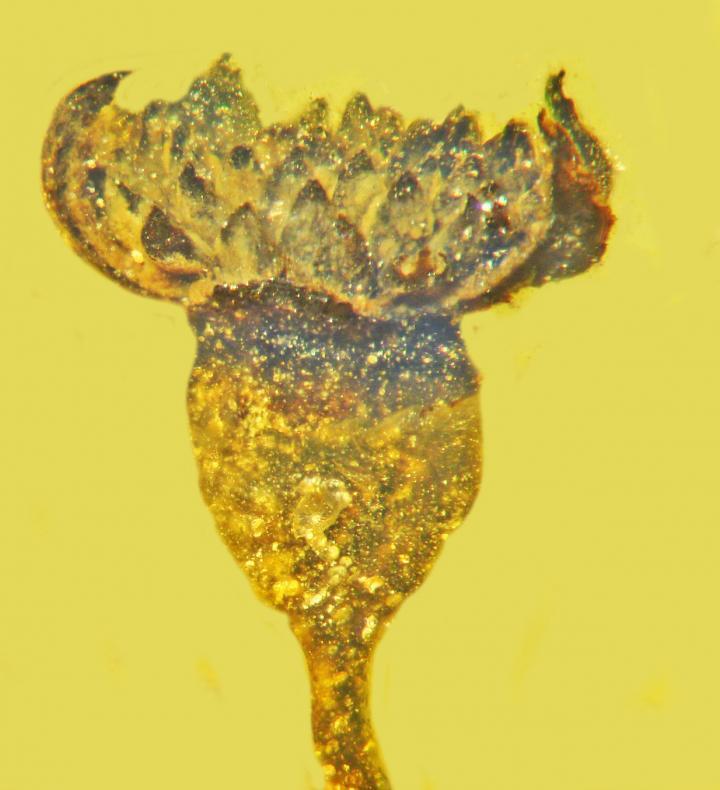Fossilized tree resin, commonly known as amber, has offered paleontologists extraordinary insights into ancient ecosystems. The latest golden time capsule discovery comes from Oregon State University researchers who have identified a completely new, previously unknown genus and species of flower dating back 100 million years to the mid-Cretaceous period.
The research was led by George Poinar Jr., a legendary paleobiologist whose ideas inspired Jurassic Park author Michael Crichton. The new type of flower was discovered in amber found in a region of northern Myanmar, known for its rich 100-million-year-old deposits.
The discovery is a type of angiosperm flowering plant and has been named Valviloculus pleristaminis. The stunningly well preserved specimen is a male flower which Poinar notes displays amazing detail.
“Despite being so small, the detail still remaining is amazing,” explains Poinar. “Our specimen was probably part of a cluster on the plant that contained many similar flowers, some possibly female. The male flower is tiny, about 2 millimeters across, but it has some 50 stamens arranged like a spiral, with anthers pointing toward the sky.”

George Poinar Jr.
Poinar’s work investigating these amber deposits in Myanmar has revealed a large variety of ancient organisms over the past few decades. The amber comes from a geographical area called the West Burma Block, which was once a part of the ancient continent known as Gondwana. And collectively Poinar’s work is questioning traditional geological timelines that have suggested the West Burma Block broke away from Gondwana between 200 and 500 million years ago.
Poinar claims this great tectonic shift may have occurred as recently as 100 million years ago. Because angiosperms are thought to have initially evolved around 100 million years ago, and generally spread across what we know today as the southern continents of Australia, Africa and South America, this work hypothesizes the tectonic migration of Gondwana could have occurred much more recently than geologists currently believe.
In recent years, amber discoveries from different parts of the world have revealed a stunning assortment of ancient organisms, from spiders and prehistoric snakes to giant sperm and mammalian blood cells. This incredibly well preserved flower offers yet another insight into ancient ecosystems from millions of years ago.
“This isn’t quite a Christmas flower but it is a beauty, especially considering it was part of a forest that existed 100 million years ago,” says Poinar.
The new study was published in the Journal of the Botanical Research Institute of Texas.
Source: Oregon State University
The Link LonkDecember 30, 2020 at 09:26AM
https://newatlas.com/biology/new-species-flower-discovered-100-million-year-old-amber/
"Amazing" new species of flower discovered in 100-million-year-old amber - New Atlas
https://news.google.com/search?q=Flower&hl=en-US&gl=US&ceid=US:en

No comments:
Post a Comment